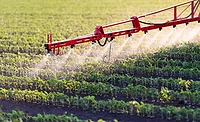USDA: 99% of Produce Samples Have Low Pesticide Levels

For the 25th year, the U.S. Department of Agriculture’s (USDA’s) Pesticide Data Program (PDP) has released its Annual Summary. The agency’s Agricultural Marketing Service conducts this program each year to collect data on pesticide residues in food. Overall, the report’s findings indicate that produce samples collected from across the U.S. show low levels of pesticide residue, based on very strict limits set by the Environmental Protection Agency.
This new report includes data from samples collected in 2015. The PDP works with state agencies representing all census regions of the country and approximately half of the U.S. population. In 2015, samples were collected and analyzed in California, Colorado, Florida, Maryland, Michigan, New York, North Carolina, Ohio, Texas, and Washington.
The PDP tests a wide variety of domestic and imported foods, with a strong focus on foods that are consumed by infants and children. EPA relies on PDP data to conduct dietary risk assessments and to ensure that any pesticide residues in foods remain at safe levels. USDA uses the data to better understand the relationship of pesticide residues to agricultural practices and to enhance USDA’s Integrated Pest Management objectives. USDA also works with U.S. growers to improve agricultural practices.
Of all samples tested, less than 1 percent had pesticide levels that exceeded the EPA’s safe level threshold. About two-thirds of those samples were grown in the U.S. Ultimately, if EPA determines a pesticide is not safe for human consumption, it is removed from the market.
See the Annual Summary in its entirety at USDA.gov.
Looking for quick answers on food safety topics?
Try Ask FSM, our new smart AI search tool.
Ask FSM →








